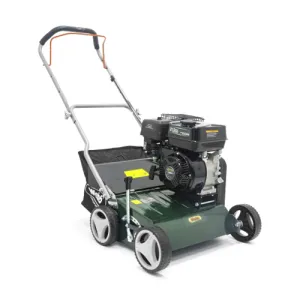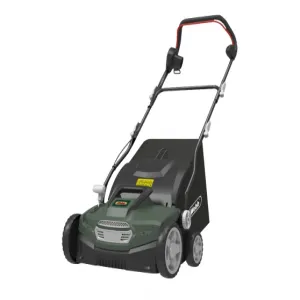Scarifying should ideally take place in spring - around April or early May is best. However, you can scarify in early autumn but make sure you do this before frost makes a first appearance.
There are a few exceptions - if you have recently laid turf, seeded a lawn, or are moving into a property with newly laid turf, wait a year to prevent damage to the lawn.
Although scarifying once a year should be enough for most lawns, you can scarify a lawn twice a year if needed. Do this once in spring and again in autumn if required but avoid temperature extremes and any risk of the lawn drying out after scarifying.
Why should you scarify?
If you don’t scarify your lawn, organic material and moss can build up creating a matt which prevents light and nutrients reaching the soil.
Grass needs the light, water and nutrients to reach its roots, otherwise it will become weak and can be overtaken by weeds and moss.
Scarifying also prevents waterlogging and can contribute to a reduction in grass diseases. Removing the thatch through scarifying will help the grass become more resilient and fight off the impacts of stress from extreme weather too.
Should you scarify at all?
If your lawn looks lush, green, healthy and free of moss, you may not need to scarify at all, but you can usually tell if your lawn needs scarifying by testing it with a rake.
If moss, grass clippings or other organic material comes away easily, then it’s time to scarify. If nothing comes away, leave it alone and test again in autumn.
The only exception to this test is a lawn containing a lot of weeds. Weeds indicate that your lawn might benefit from scarifying because they are better at exploiting the lack of nutrients caused by underlying thatch.
Which scarifier should you use?
Your choice of scarifier may come down to the size of your lawn. A petrol scarifier will let you cover larger areas without the need of a power cable or battery charger. They are a little heavier which may provide a benefit in terms of soil penetration.
Cordless or electric scarifiers will be quieter than petrol versions but will make the process just as easy. If you have a ride on mower, you may prefer a towed scarifier that will also aerate the soil.
Finally, you can manually remove thatch and moss with a tined rake. Go gently to prevent damage to the lawn and work up and down the lawn in rows to remove moss and thatch.
Once you’ve disposed of the organic material you can apply a little more pressure with the rake, pressing it into the soil a little and scraping it by pulling the rake diagonally across the rows you were working on originally.
Whichever method you choose, scarifying will improve the quality of your lawn as part of a broader lawncare regime.







